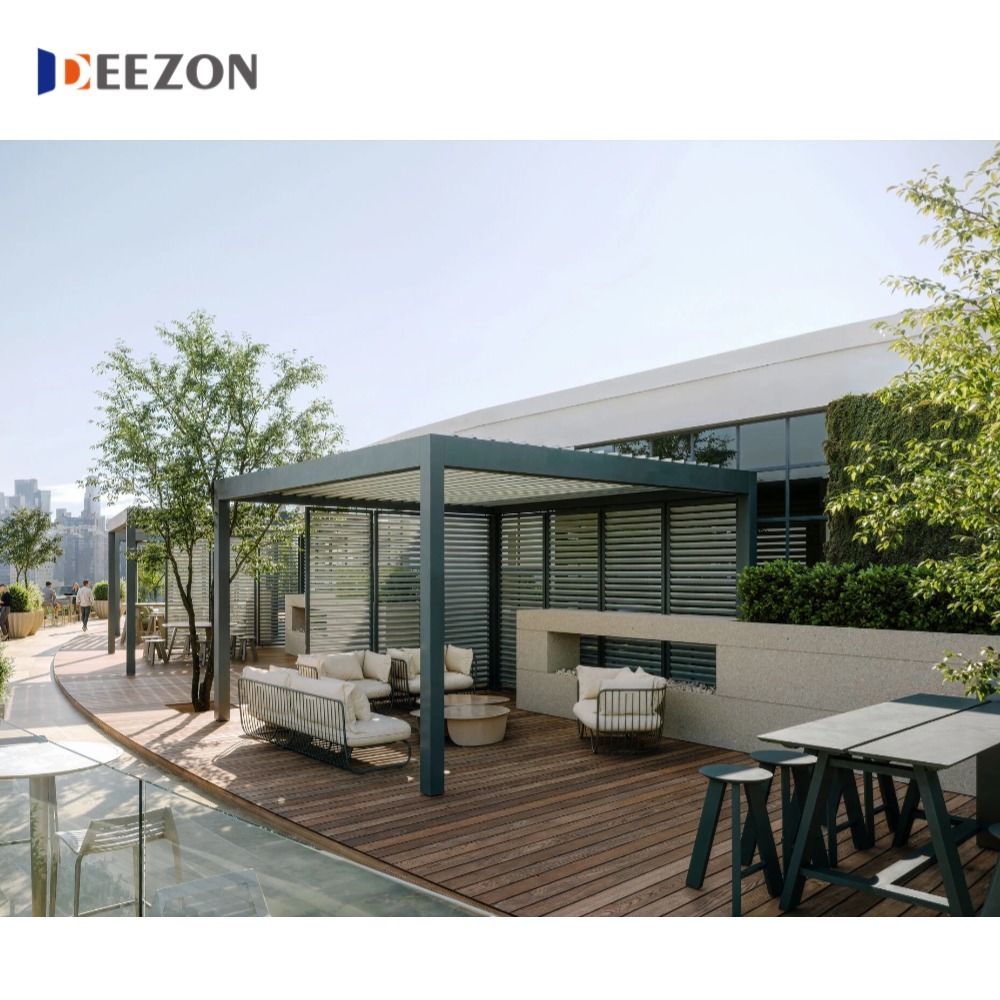Foshan Deezon Windows and Doors Co.,Ltd.
language
Sustainable Building: The Advantages of Using Glasshouse Aluminum for Eco-Friendly Construction
Aug 18,2025

Sustainable Building: The Advantages of Using Glasshouse Aluminum
Introduction to Sustainable Building Materials
In an era where environmental concerns dominate global discourse, sustainable building materials are emerging as essential components in modern construction. This shift towards eco-friendly solutions reflects a broader commitment to reducing carbon footprints and promoting energy efficiency. Among the various materials available, **glasshouse aluminum** stands out for its versatility and sustainability. This article delves into the unique advantages offered by glasshouse aluminum, making it a premier choice for sustainable building practices.
What is Glasshouse Aluminum?
Glasshouse aluminum refers to a specialized type of aluminum alloy designed primarily for use in structures characterized by extensive glass applications, such as greenhouses and modern architectural designs. This material combines lightweight strength with excellent thermal properties, making it an ideal candidate for sustainable construction. Its adaptability allows for innovative designs while maintaining energy efficiency, durability, and aesthetic appeal.
Understanding the Composition of Glasshouse Aluminum
Glasshouse aluminum is crafted from a combination of aluminum and other elements, enhancing its performance characteristics. Some key features include:
- **Corrosion Resistance**: Treated to withstand harsh environmental conditions, glasshouse aluminum exhibits excellent resistance to corrosion, prolonging the lifespan of structures.
- **Lightweight Structure**: Its lightweight nature allows for easier handling and installation, which ultimately reduces transportation emissions.
- **Thermal Efficiency**: The material's thermal properties contribute to energy savings by minimizing heat transfer, ensuring optimal internal temperatures.
The Environmental Benefits of Using Glasshouse Aluminum
When considering sustainable building materials, the environmental impact is paramount. Glasshouse aluminum provides multiple ecological advantages that align with the goals of sustainable architecture.
1. Energy Efficiency and Insulation
One of the most notable benefits of glasshouse aluminum is its energy efficiency. By minimizing thermal bridging, aluminum reduces heat loss in winter and heat gain in summer. This insulation quality significantly lowers energy consumption for heating and cooling, leading to reduced greenhouse gas emissions. As a result, buildings constructed with glasshouse aluminum contribute to lower energy bills and a smaller carbon footprint.
2. Recyclability and Lifecycle Impact
Glasshouse aluminum is highly recyclable, with a lifecycle that emphasizes sustainability. Unlike many materials that degrade during recycling processes, aluminum retains its qualities, allowing it to be reused without loss of strength or durability. This feature not only reduces waste in landfills but also lessens the demand for new raw materials, further conserving natural resources.
3. Reduced Construction Waste
Utilizing glasshouse aluminum in construction projects often results in a decrease in overall waste production. Its precision manufacturing allows for exact measurements, minimizing off-cuts and excess materials. Consequently, building sites can maintain cleaner environments, leading to more sustainable operational practices.
Design Flexibility and Aesthetic Appeal
In addition to its environmental benefits, glasshouse aluminum offers remarkable design flexibility and aesthetic appeal. Architects and designers increasingly favor aluminum for its modern look and versatile applications.
1. Modern Aesthetics and Versatile Applications
Glasshouse aluminum provides a sleek, contemporary appearance that complements various architectural styles. Its versatility allows for diverse applications, from residential greenhouses to commercial buildings and striking facades. The material supports large glass panels, maximizing natural light and creating inviting spaces that enhance user experience.
2. Customization Possibilities
Customization is a critical factor in modern construction. Glasshouse aluminum can be easily fabricated into different shapes, sizes, and finishes. This adaptability enables architects to create unique designs that stand out while maintaining functionality and sustainability.
Cost-Effectiveness of Glasshouse Aluminum
While the initial investment in glasshouse aluminum may be higher than traditional materials, its long-term cost benefits make it an economically sound choice.
1. Lower Maintenance Costs
The durability and corrosion resistance of glasshouse aluminum result in lower maintenance costs over time. Unlike wood or other materials, aluminum does not require frequent painting or treatment to preserve its integrity. This longevity translates to significant savings for property owners in the long run.
2. Energy Savings Over Time
As previously mentioned, the energy efficiency offered by glasshouse aluminum leads to reduced energy bills. Over time, these savings can offset the initial costs associated with its implementation, making it a financially attractive option for sustainable construction.
Glasshouse Aluminum in Real-World Applications
The practical advantages of glasshouse aluminum are evident in a variety of real-world applications across different sectors.
1. Residential Construction
In residential settings, glasshouse aluminum is commonly used for sunrooms, skylights, and expansive windows. These installations enhance natural lighting and provide homeowners with beautiful views of their surroundings. The energy-efficient properties of aluminum contribute to comfortable living spaces while reducing utility costs.
2. Commercial Buildings and Greenhouses
Commercial enterprises benefit from glasshouse aluminum through its use in storefronts and office buildings. The material's strength allows for large glass façades, promoting visibility and creating open, inviting environments. In agricultural sectors, glasshouse aluminum structures are ideal for greenhouses, optimizing plant growth conditions while minimizing energy use.
Challenges and Considerations When Using Glasshouse Aluminum
While glasshouse aluminum presents numerous advantages, potential challenges should also be acknowledged.
1. Initial Costs and Investment
As mentioned, the upfront costs for glasshouse aluminum may be higher compared to conventional materials. However, the long-term benefits often justify this initial investment. It is essential for architects and builders to communicate these advantages to stakeholders to secure the necessary funding.
2. Thermal Performance in Extreme Conditions
In extremely hot or cold climates, the thermal performance of glasshouse aluminum can be impacted without proper insulation strategies. Integrating thermal breaks or using insulated aluminum components can enhance efficiency, particularly in harsher environments.
Future Trends in Sustainable Building Materials
As sustainability continues to drive innovation in construction, glasshouse aluminum is poised to play a significant role in future developments.
1. Integration with Smart Technologies
Future advancements may see glasshouse aluminum integrated with smart technologies, enhancing energy efficiency further. Smart glass and automated systems could optimize natural light and temperature controls, making buildings even more environmentally friendly.
2. Continued Research and Development
Ongoing research into aluminum alloys and coatings will likely yield even more sustainable options for construction. Innovations may focus on improving recyclability and reducing environmental impacts during production.
Frequently Asked Questions (FAQs)
1. What are the environmental benefits of glasshouse aluminum?
Glasshouse aluminum is energy-efficient, recyclable, and reduces construction waste, making it an excellent choice for sustainable buildings.
2. How does glasshouse aluminum compare to traditional materials?
While it may have a higher initial cost, glasshouse aluminum offers lower maintenance and energy savings over time, making it a cost-effective option.
3. Can glasshouse aluminum be customized?
Yes, glasshouse aluminum can be easily fabricated into various shapes, sizes, and finishes, allowing for unique design possibilities.
4. Is glasshouse aluminum suitable for extreme weather conditions?
With proper insulation strategies, glasshouse aluminum can perform well in extreme weather, ensuring energy efficiency.
5. Where is glasshouse aluminum commonly used?
It is widely used in residential constructions such as sunrooms and skylights, as well as in commercial buildings and agricultural greenhouses.
Conclusion
The advantages of using glasshouse aluminum in sustainable building practices are substantial, ranging from its energy efficiency and environmental benefits to its modern aesthetics and cost-effectiveness. As the construction industry continues to evolve, embracing innovative materials like glasshouse aluminum is essential for creating sustainable and durable structures. By prioritizing these eco-friendly choices, we can contribute to a greener future while meeting the demands of modern architecture.
PREVIOUS:







